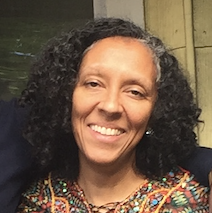Tag Archive: privilege
March 26, 2015
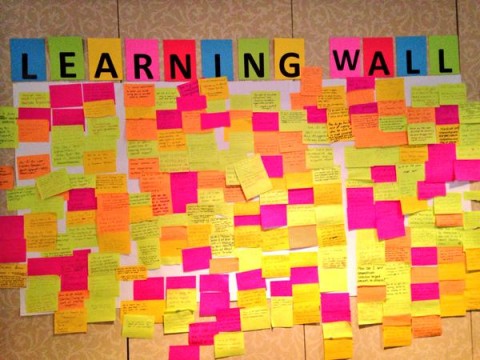
Just returning from the Champions for Change gathering in Washington, DC hosted by the Tamarack Institute and the Collective Impact Forum. I was in attendance with a couple of others from the Food Solutions New England Network Team to learn more about people’s experiences with creating and developing a “backbone” function in their “collective impact” efforts, and also had the opportunity to do a couple of skills sessions around IISC’s “Dimensions of Collaborative Success” framework from Facilitative Leadership for Social Change. Read More
March 5, 2015
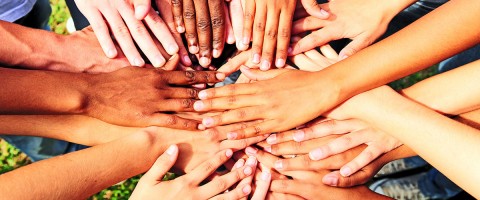
Two years ago, the Food Solutions New England (FSNE) Network Team, with support from IISC, committed to putting racial equity at the center of its work in trying to bring the six state region together around a vision of a more sustainable food system. Since formalizing that commitment with more than 150 delegates at last year’s annual Food Summit, and taking it to other food system-focused networks by invitation, the FSNE Network Team has faced the big question – Now what? How to deliver on this commitment and in a regional context? At the very least we continue to deepen our learning around and commitment to equity, modeling for and learning from and with others, growing and strengthening our understanding and action. A sub-committee of the Network Team, of which IISC is a part, has put together a racial equity plan consisting of various areas of activity, including education, communication, convening, network weaving/organizing and curating tools and resources for food system advocates at all levels (organizational, community, municipal, state).
One step that has just been launched is a bit of an experiment, and takes the 21 Day Racial Equity Habit Building Challenge from Debbie Irving (author of Waking Up White) and Dr. Eddie Moore, Jr. (founder of the White Privilege Conference), and turns it into a virtual community of practice. The ongoing challenge of the Network Team is to figure out a variety of means to keep knitting the network, and to keep communication and learning flowing. This is where the proliferation of social media tools and collaboration platforms has been extremely helpful. Read More
February 26, 2015

One of my mantras around network building and social change is that creating greater (and new forms of) connectivity is not simply a “so that” or a “nice to have” but is really an “as” and critical to the work of systems and structural change. This is echoed is some way, shape or form in many of the posts that appear in this space, and I think it bears repeating. Consider the following:
“Whether we learn how to love ourselves and others will depend on the presence of a loving environment. Self-love cannot flourish in isolation.”
bell hooks
- Isolation can kill. Science shows how loneliness and social isolation can ravage the body and brain. As noted in an article in The New Rebublic – “A partial list of the physical diseases thought to be caused or exacerbated by loneliness would include Alzheimer’s, obesity, diabetes, high blood pressure, heart disease, neurodegenerative diseases, and even cancer.” And who are the lonely? In many cases the poor, the bullied and oppressed, the “different.” When we consider how isolation can impact genes, we see how the cycles of poverty and oppression can play out at a fundamental psychobiological level. What this calls for, in part, is work that reconnects those who are currently in isolation and on the margins from/of myriad social goods including emotional support, tangible services and other critical resources.
- Disconnection breeds irresponsible behavior and prejudice. Science is helping us to understand the role of implicit bias in all of our lives and in society. Furthermore, the work of people like Paul Piff shows how those with considerable privilege who isolate from the rest of society (and keep to their own) tend to lose touch with empathy and any sense of egalitarianism. As my colleague Cynthia Parker notes, “Engaging with people unlike ourselves in situations that involve meaningful activity [and] counter-stereotypic experiences” helps to eliminate biases. In other words keeping and strengthening direct connection is a key part of the work for equity and democracy.
Read More
February 12, 2015
“You have to remember, every boundary is a useful bit of fiction.”
– Buckminster Fuller
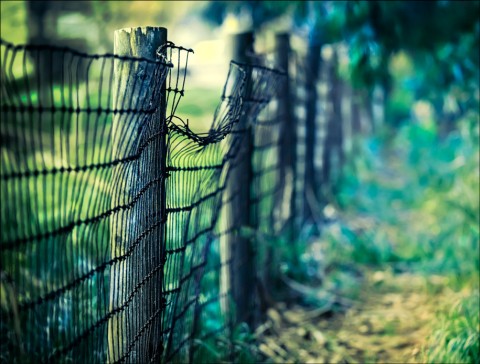
One of the more memorable stories about my late father, who passed away 3 years ago this month, happened not long after the Great Recession began in 2008. At the time, he was on the board of a national organization devoted to the study and promotion of human consciousness and the connection between science and spirituality. During a phone meeting of board members, people got to talking about the economic crisis, at which point one member made the following remark: “It’s at times like these that it’s especially important to remember that we are all one.”
“Bullshit!” was my dad’s response (not prone to such outbursts on that board or in general).
After a momentary and no doubt stunned silence, he elaborated – “Clearly we are not one. Some people, a very few people, are making out like bandits from this crisis. Meanwhile of the so-called 99%, some have been much harder hit than others, their wealth decimated. How can we say we are one at a time like this?”
To be fair to my father and full in the storytelling, my dad acknowledged that he believed that it is important to recognize interdependence and shared humanity, and that how and when to do this is an important consideration. Which brings me to the quote from Buckminster Fuller above, a personal favorite and one that I seem to keep sharing recently. Fuller, the eminent systems theorist and design scientist, understood the interconnected nature of reality, as well as the human need and tendency to draw boundaries. Theoretically these boundaries are drawn to be of use to something and/or someone – to name important distinctions, focus attention, aid with analysis, etc. In fact boundaries, or at least difference, might be said to be crucial to life, as dynamic exchange is required to keep living systems alive. Yes, boundaries can be very useful . . . except when they’re not. Read More
January 29, 2015
“Our world is, to a very real extent, based on dialogue. Every action taken that involves more than one person arises from conversation that generates, coordinates and reflects those actions. Those actions have impact. If our human world is based on conversations, then the work of creating and supporting those conversations is central to shaping a world that works. Designing and conducting meetings and other groups sessions well is vital to determining our common future.”
– Group Works
 Just recently in work with a national network, we turned the corner to start creating a structure to channel the alignment it has achieved around core goals for system change and ultimately to realize “collective impact” in a particular domain. As we were kicking off some of the early discussions, someone asked what I thought were the keys to creating a successful network structure. That’s a huge question that merits a complex answer, and I’ll admit that in reflecting on the dozen or so large scale change efforts I’ve been a part of the past 7 or 8 years, the first thing that came to mind was – “really good facilitation.”
Just recently in work with a national network, we turned the corner to start creating a structure to channel the alignment it has achieved around core goals for system change and ultimately to realize “collective impact” in a particular domain. As we were kicking off some of the early discussions, someone asked what I thought were the keys to creating a successful network structure. That’s a huge question that merits a complex answer, and I’ll admit that in reflecting on the dozen or so large scale change efforts I’ve been a part of the past 7 or 8 years, the first thing that came to mind was – “really good facilitation.”
Simplistic as this response may sound I was thinking of lessons learned from numerous efforts that no beautiful or well thought out network/collaborative structure stands up to a lack of strong facilitative capacity (skillset, mindset, and heartset). To be more nuanced, it is not just facilitation that ultimately came to mind, but what we at IISC call facilitative leadership.
For over 20 years, IISC has been teaching, preaching and practicing Facilitative Leadership (FL), and in many ways it seems that this approach has never been riper in light of the burgeoning call to collaborate and cooperate across boundaries of all kinds. At its base, FL is about creating and inspiring the conditions for self-organization so that people can successfully achieve a common (and often evolving) goal. The logical question that follows is, “How does one ‘create and inspire’ these conditions?” The answer is found in a variety of practices derived from successful group work and that have indeed shown promise across different networks and large scale change efforts to create solid foundations and momentum for social change. Among them are these: Read More
December 22, 2014
“As long as it remains invisible, it is guaranteed to remain insoluble.”
Margaret Heffernan, from Willful Blindness
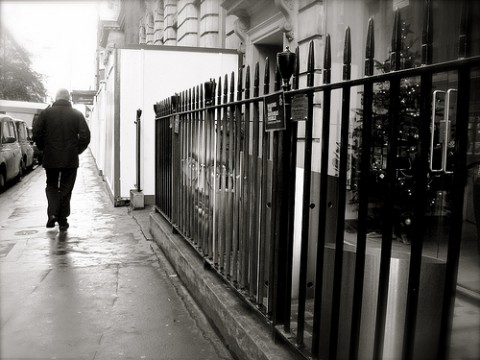
Photo by Marie Aschehoug-Clauteaux
As I look back on 2014 through the lens of the work we have done at IISC supporting networks and movements for social justice and system change, one of the most significant themes that I’ve distilled is the value of “making the invisible visible.” This month I’ve facilitated a number of reflection sessions with diverse groups to gauge the development and impact they have felt and observed from our work over the course of the year. I tend to ask people how they see change happening at different levels: self, group, larger systems (organization, neighborhood, community, state, region, etc.). I also like to ask them to reflect via the use of stories, which I find often help to capture and convey developmental processes.
What has come from this sharing is that even though some of the big goals around equity and sustainability remain elusive, there has been movement and a significant part of this development comes down to seeing what had previously been unseen. While the methods for getting to this recognition have varied – from system mapping and analysis to network mapping to structural and power analysis to learning journeys to dialogue and tackling difficult conversations – by creating ample space to see, share and suppose, there has been significant deepening of relationships (to self, other, the work), change processes, and potential impact.
So what is being made visible? Read More
December 3, 2014
“We need to reach out to one another from a perspective that makes group membership less determinative of opportunity and more related to enhancement of self and community. We need to increase our sense of abundance and improve our sense of well-being, as individuals and in relation to one another. “
– john a. powell, Racing to Justice

I’ve had a number of conversations lately about mindsets and how they relate to effective collective and net work, especially work for justice. Most recently I had the opportunity to talk to Jim Ritchie-Dunham of the Institute for Strategic Clarity about his research into “thriving” organizations and communities in a number of diverse settings – sectors and countries. What he has noted as a shared and distinct (though surely not entirely sufficient) difference-maker for these groups is an orientation towards abundance.
Jim has recently published a book entitled Ecosynomics, which is also the name of a field he has helped to found, which looks at “the principles of collaboration” and more specifically, “the principles of abundance.” Research from Jim and his colleagues shows that even amidst what may appear to be a scarcity of resources and hope, some groups thrive in large part through the conscious construction of “agreements” that can create more opportunity.
I have questions and look forward to further conversation with Jim about the starting point of these groups and the degree to which dynamics of power and privilege come into play with respect to their respective successes and who ultimately benefits. At the same time, I have been aware in my work how much of a difference it can make for groups to be conscious of their ability to choose how to be with one another, and how this can help get beyond otherwise self- and collective-limiting behavior. Read More
October 21, 2014
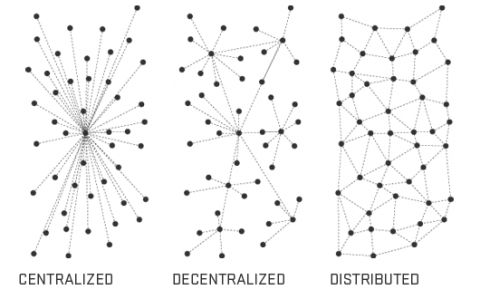
Readers of this blog know how much promise we at IISC see in networks to bring about greater depth and breadth of change in our country and communities. At the same time, we do not see networks as a panacea. In fact, there are good reasons to be vigilant about “net work” to ensure that it does not exacerbate the very conditions we are trying to remedy, especially when it comes to social inequities.
We have previously referenced the report from the Aspen Institute, The Power Curve Society, which considers the broad implications of a globally networked economy that allows greater ease of transactions. In this technologically accelerated economy, the report states, wealth increasingly and problematically concentrates in the hands of a few rather than spreading itself out across the larger population. This seems to be a natural emergent phenomenon of not just the unchecked networked economy but of many networks. As Kim Taipale notes, this is a paradoxical result of “network effects,” –
“Freedom results in inequality. That is, the more freedom there is in a system, the more unequal the outcomes become.”
This is because of something known as the “power-law distribution” that takes hold on open platforms, as wealth flows to the “super-nodes,” a phenomenon sometimes called “preferential attachment.” Read More
September 24, 2014

Photo by Jenny Downing
Every now and then we get the question about what is the best way to structure a social change network, to which the most frequent response is, “It depends.” Case in point, in a past post, I offered examples of three different network forms growing out of the same region (New England) in a similar field (food systems). These forms that have evolved in three states have largely depended upon the initial framing question for the change effort (how to tackle food insecurity vs. how to grow the agricultural economy vs. how to achieve food justice), contextual factors (political dynamics, what already exists, who is engaged), and resources (not just funding, but certainly funding) available. And since the writing of that post, each has evolved, more or less significantly, in line with new challenges and opportunities. Some of the take-aways from this align with the lessons of moving from a more mechanistic to a regenerative outlook –
- start where you are with what actually is,
- avoid buying into “best practices,” and
- expect and even desire it to change as you go.
Read More
September 3, 2014
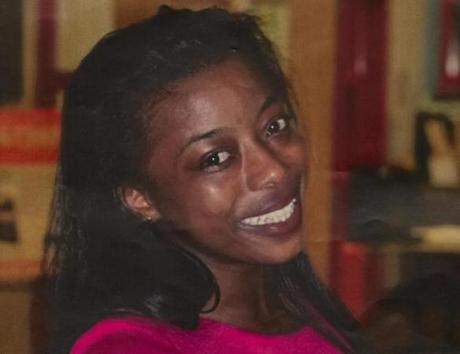
Photo credit: Boston Globe
Sadly, I am writing yet another memorial post, in a summer that has seen too much tragedy. This weekend, Boston laid to rest Dawnn Jaffier. By all accounts, she was a remarkable young woman who lived a life of service and love. Over the past several days, many young people have testified to Dawnn’s positive influence on their lives and many promised to continue to live as she lived, investing in the lives of young people. This time, death came at the hands of an 18 year-old young black man, allegedly bent on retaliation. Jaffier was innocently caught in the crossfire. While some are calling for an end to the festival and parade that provided the backdrop for this tragedy, I think her death cries out for renewed efforts to intervene in the complex system of internalized oppression – a system that cultivates within black people ourselves a belief in the marginal value of black life – and in a system of structural racism that allows gun trafficking to flourish despite the costs and continues to lock too many men of color out of the kinds of opportunities that could compete with the call of the streets. Dealing with either side of the equation without the other seems a fruitless endeavor.
September 3, 2014

Photo by Tela Chhe
One mantra I have for working with groups is, “If you’ve seen one group, you’ve seen one group.” Part of the welcome and challenging nature of collaboration is that in each instance we are dealing with a unique organism or constellation of human beings coming together to get something done. As complex living systems, groups of people are not prone to simple “best practices” for getting them working in a prescribed way. There certainly are some “promising practices,” including what we teach at IISC in our Facilitative Leadership for Social Change courses. Still collaboration, including the practice of group facilitation, is a heuristic undertaking – an experience-based approach to problem solving, learning, and discovery that suggests solutions which are not guaranteed to be optimal. Read More
July 18, 2014

We partnered with a foundation as they built a network of leaders who shared a deep passion for their city. In the beginning, many of the leaders wanted to do something together quickly. We encouraged them to pause, build deeper relationships, and see what emerged. Read More




 Just recently in work with a national network, we turned the corner to start creating a structure to channel the alignment it has achieved around core goals for system change and ultimately to realize “collective impact” in a particular domain. As we were kicking off some of the early discussions, someone asked what I thought were the keys to creating a successful network structure. That’s a huge question that merits a complex answer, and I’ll admit that in reflecting on the dozen or so large scale change efforts I’ve been a part of the past 7 or 8 years, the first thing that came to mind was – “really good facilitation.”
Just recently in work with a national network, we turned the corner to start creating a structure to channel the alignment it has achieved around core goals for system change and ultimately to realize “collective impact” in a particular domain. As we were kicking off some of the early discussions, someone asked what I thought were the keys to creating a successful network structure. That’s a huge question that merits a complex answer, and I’ll admit that in reflecting on the dozen or so large scale change efforts I’ve been a part of the past 7 or 8 years, the first thing that came to mind was – “really good facilitation.”



